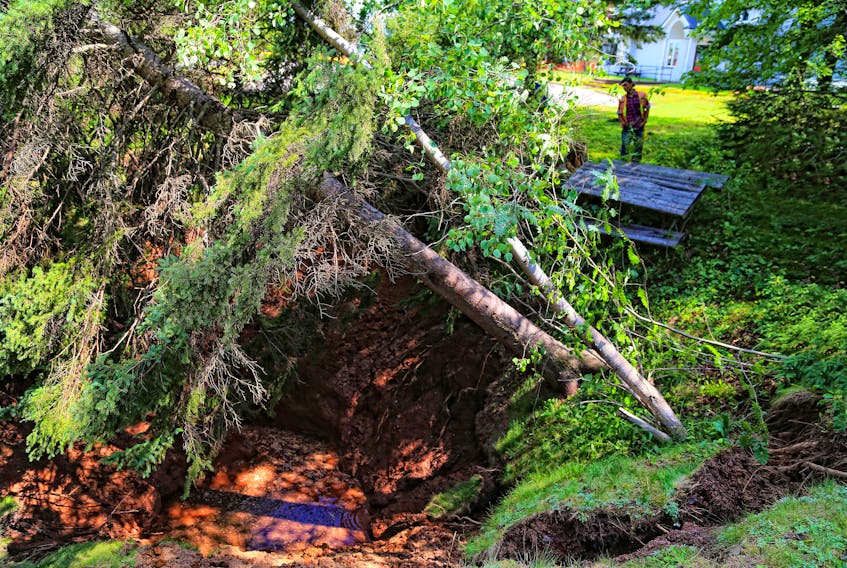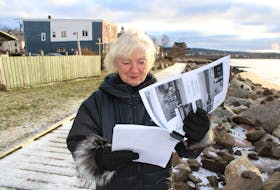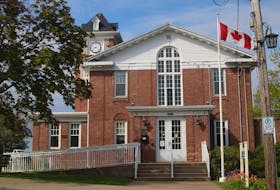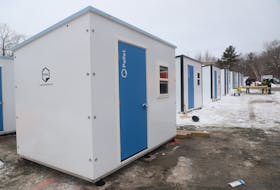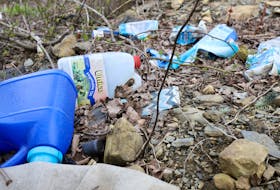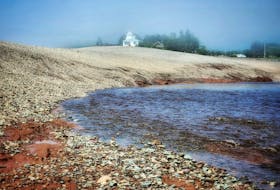OXFORD, N.S. - A geologist with the provincial Energy and Mines Department is warning people to keep their distance from a sinkhole in a popular Oxford park.
“We need to keep people out and keep people safe until the site stabilizes,” regional geologist Amy Tizzard said Wednesday. “Right now, it’s still actively developing. ”
People using the park late Monday evening got a surprise when a small sinkhole in the Lions Park suddenly became much larger, swallowing a large section of land in a wooded area near the Lions Community Centre.
The park has been closed since Monday and there’s no indication when it may open. The threat to the community centre has yet to be determined as well.
Tizzard said there is no threat to the rest of the community since the gypsum deposit responsible for the sinkhole does not extend into the populated part of town.
“There is a belt around the area of the salt lake that extends west a few kilometres. It’s basically just a sliver of gypsum,” said Tizzard.
Where the sink hole is located is part of a formation known as the Windsor Group that occurs throughout the province in places like Windsor, Falmouth, Cape Breton and elsewhere. Gypsum is part of that geological feature and it’s a mineral that’s prone to sinkhole development because it’s a soft rock that can dissolve through either groundwater or surface runoff.
She said there’s no way of knowing what caused this sinkhole, saying it could have been something as simple as a shift in the groundwater table. She doubts heavy rain that hit the area on Saturday had anything to do with it – considering a small sinkhole had developed there in late July.
While Don Christie, who manages the park for the Oxford Lions Club, expressed concern Tuesday that the lake, a popular summer swimming destination, could be threatened, Tizzard said there has been no noticeable change in its level.
Fellow geologist Bob Ryan, manager of resource evaluation and development for Energy and Mines, said people should not be surprised the sinkhole happened.
“That area has always had a sinkhole karst problem,” Ryan said, adding nearby lakes are sinkholes from years ago that filled with water. “We did the geological maps in that area in the 1980s and we have that area marked as a karst area, a geological term for an area that’s prone to have sinkholes.”
Twitter: @ADNdarrell

